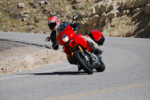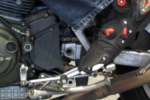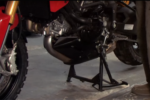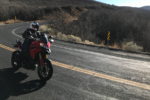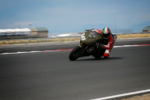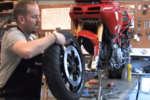One Simple Habit To Reduce Reaction Times
There’s two main things that are killing us as riders. The first is running wide in corners. The second is intersections. One of the problems with a lot of basic rider programs is they don’t necessarily teach us how to become an experienced rider. The vast majority of beginner riding programs are teaching us how to be a beginner rider.
Now, we all gotta’ start somewhere, right, and basic rider programs serve an extremely important purpose, but we need to realize that basic rider courses are just that – they are very basic and they help us become familiar with the basics of riding a motorcycle, but if we want to survive long enough to become an experienced rider, we have to grow beyond a few of the things they teach at the moment when they are no longer relevant.
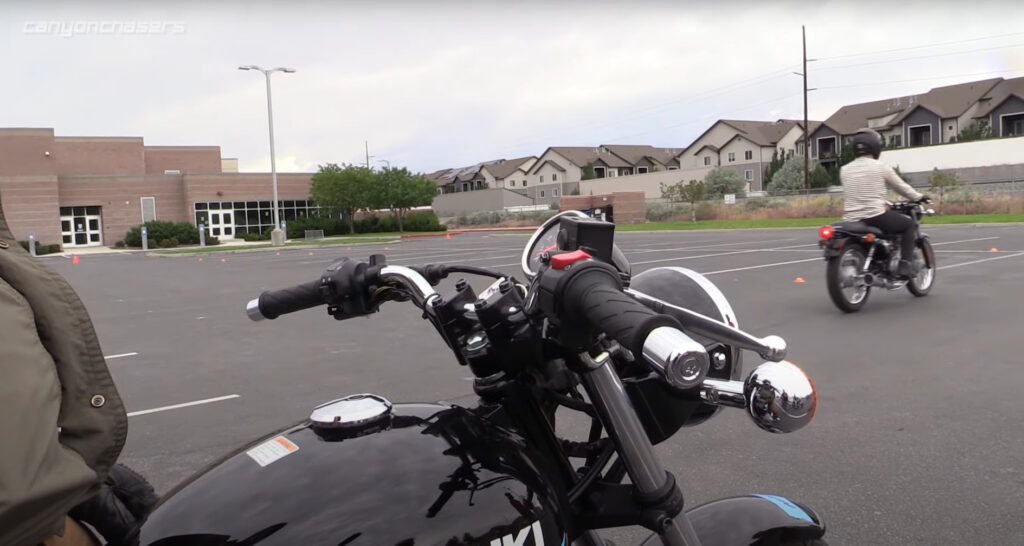
I’ve dedicated a lot of energy talking about how to stop running wide in corners, and the importance of “trail braking” and slowing into corners, especially for street riding, but I haven’t spent nearly as much time talking about the other killer; intersections. Look, in America, every week, almost 100 of us are killed in fatal accidents, and a big chunk of those fatalities, over 30-percent, occur in an intersection.
What’s interesting about the intersection-data is that it’s not necessarily four-way stops and stop-lights where we’re getting tagged. It’s uncontrolled intersections. An uncontrolled intersection doesn’t have any traffic control systems to help determine the right-of-way, such as stop signs, yield signs, pavement markings, traffic lights, or whatever else. Think of driveways, parking lots, most neighborhoods, most surface streets and even rural side-roads.
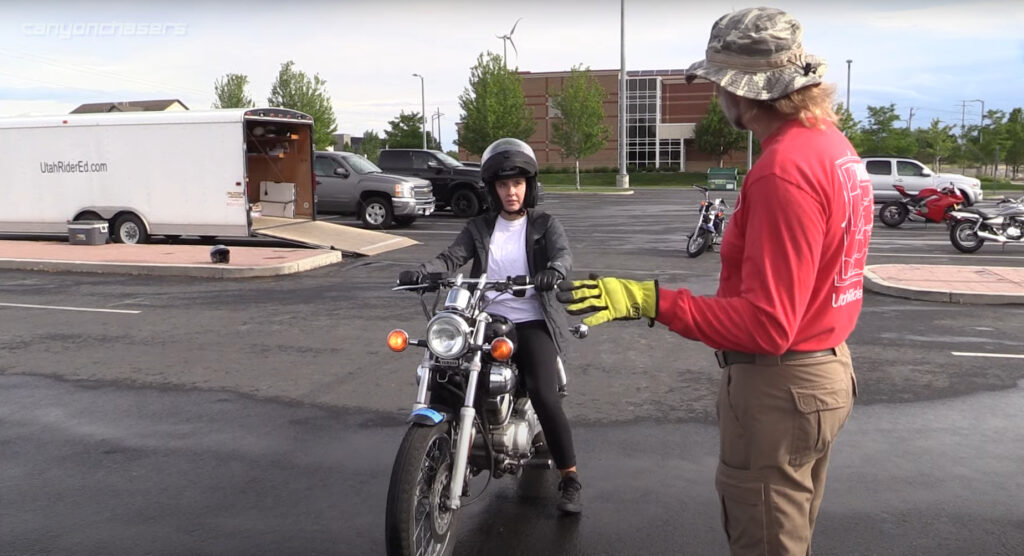
Now, a lot of basic rider courses teach us to cover the clutch, and keep our hands off the front brake lever. This works well enough for a brand new rider learning how to be a brand new rider. We need to learn how to become experienced riders. We need to learn the skills that keep us alive after we’ve left the basic rider course parking lot behind. Remember, a basic rider course is a great first step, but it’s only the first step.
Time and Distance
So, what do we need to do? Well, we need to cover our front brake, basically, all the time. No, really. I mean it. We need to keep our fingers over the front brake basically every time we’re on our motorcycle. It’s definitively the best way to shorten our reaction time and prepare ourselves to stop when, inevitably, another driver or pedestrian doesn’t see us.
It’s basic, simple math that’s easy to ignore. Time and distance. The time it takes to reach up and begin squeezing the brake can be extremely costly because of the distance we’ve traveled in that time. Think about it, the reaction time to reach the front brake is literally when you’re traveling the fastest before you’ve even touched the brakes. In those emergency situations, every millisecond and every meter matters. We need to be ready to start squeezing that front brake, not in four or six bike-lengths, but right now!
The struggle most of us will face is reactively stabbing the brake. Those “knee-jerk” reactions to unexpected stimuli, right? No matter how urgently we need to go to the brakes we can’t “hit” the brakes. We’ve got to always, always ease into the front brake. Even if we have ABS.
Now, most every proficient rider has learned the critical importance of covering the brake, and they manage to do so without stabbing at it every time something unexpected jumps out in front of them. Experienced riders understand that the first five percent of squeezing the front brake is the most important part, and it must be done smoothly, no matter the urgency. The question is, how do we get there?
We want to put our hand on the throttle like this. Our first two fingers go here, like this. These two fingers go around the throttle tube like this. Obviously, this isn’t the only way to cover the brake, but this is the preferred method used by the overwhelming majority of professional riders. Some do this. Some do this. The really crazy bastards do this. But we’re going to stick with doing it like this.
Hand Anatomy
To fully understand why this is the preferred method, here’s a quick anatomy lesson.
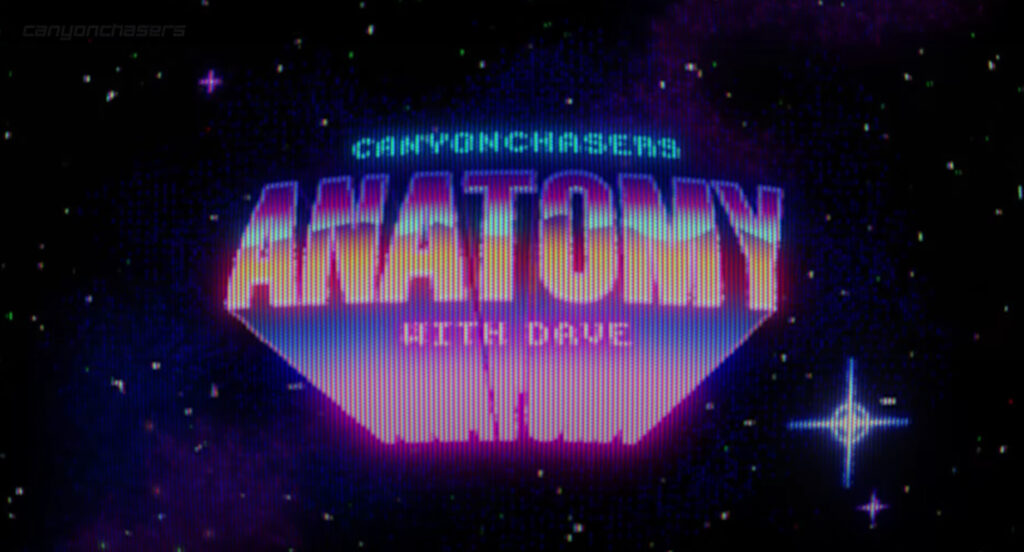
Our hand is comprised of two basic parts. The radius, which is the bone, the radial nerve, well, they control the thumb, pointy and middle finger. Then the ulna. Thats the small bone in our arm, and also the ulnar nerve. They control the ring and pinky finger. It’s part of why your ring and pinky finger like to hang out together all the time, right.
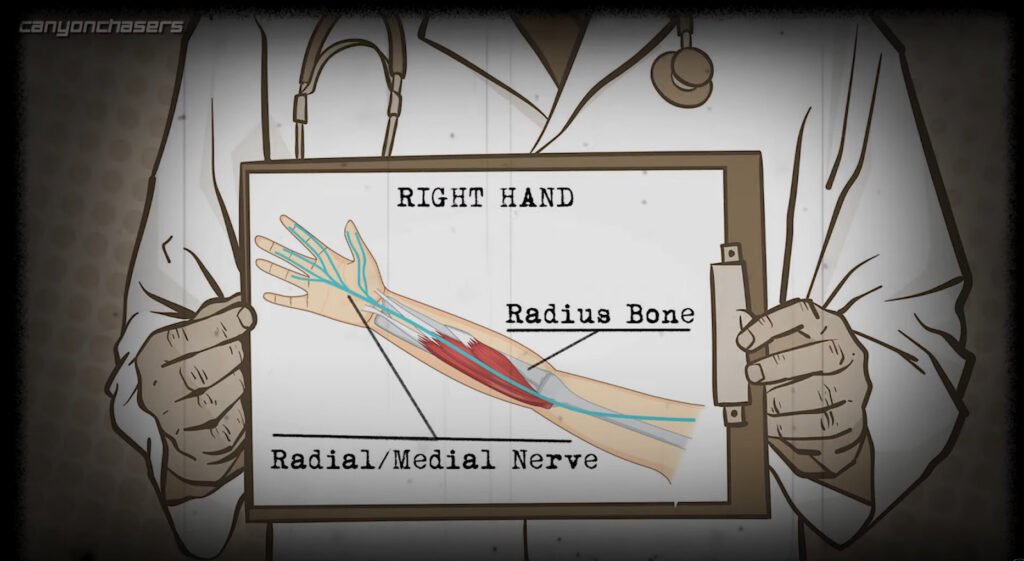
So the challenge we have as motorcyclists is we are asking a lot of our right hand. We are asking for power grip, using our large flexor muscles, the muscles in our forearm, to hold on and to really squeeze the brake, but we also need precision grip, using our smaller intrinsic muscles, the muscles mostly in the palm of our hand, to precisely control the throttle and precisely squeeze and release our brakes.
Understanding that our hand is effectively two parts is a big reason why the preferred way to use our throttle hand is to allow each half or our hand to work mostly on it’s own. The Radial half, mostly manages the brake, precise brake lever adjustments and powerful brake squeezing. The Ulnar half mostly manages the throttle, precise throttle adjustments and power holding onto the handlebars.
Cool? So, from now on and forever-more, this is how we are going to ride, everywhere we go. As we roll off the throttle, our hand simply begins gently squeezing that front brake lever.
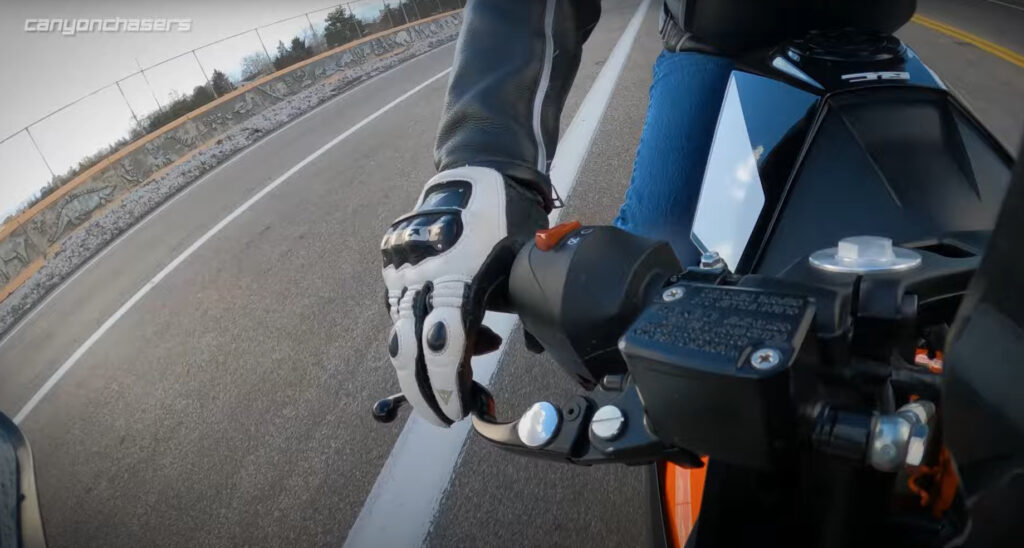
Now for the hard part? How do we get to the point where we don’t panic stab the brake? We do that with our eyes, our head, our mind and our brain.
I’m sure we’ve all been told to “keep our eyes up” But that’s a terribly over-simplified explanation. Yes, we need to keep our eyes up. Looking further ahead is how we slow down time and give ourselves more options, but more than just that we need to be actively scanning the world around us. That means not only looking way up, but glancing down at the road surface and scanning the sides of the road for potential hazards.
Our head is always moving. Our eyes like to stay centered in our eye sockets, so we help our eyes do all that scanning by actively turning our head and pointing our chin at what we are looking at. Fighter pilots scan in a figure eight pattern. Scott Russel, Mr Daytona himself, says his eyes are a paint roller, up and down, over and over.
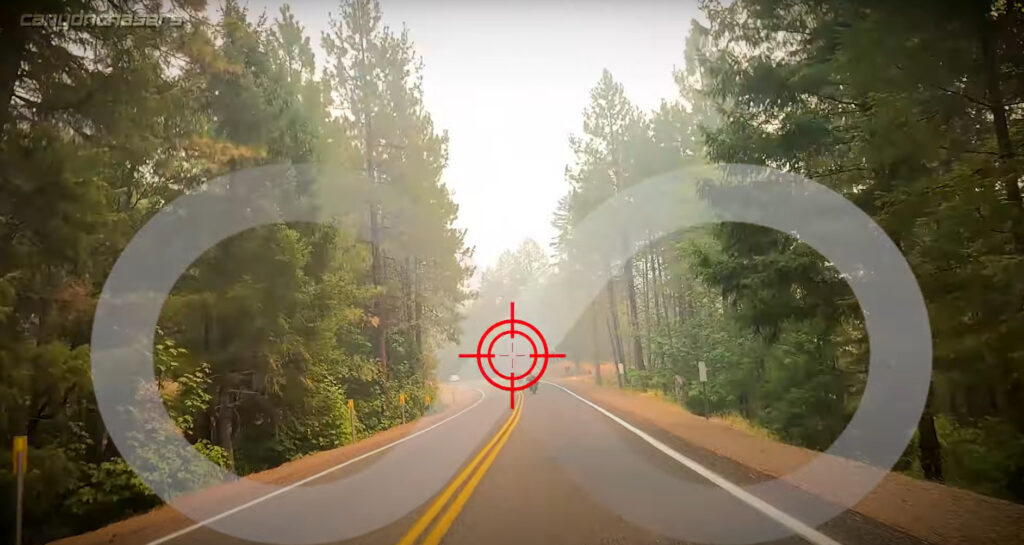
Then our mind is in overdrive trying to identify everything and at the same time our brain is planning for the next thing we gotta do, like the next turn, or stopping for the next stop light or whatever. We can also practice these skills in the car as a way to train our brain.
What We See Vs. What We Do
But back to the question at hand. How do we keep from panic stabbing the brake? It really comes down to that all-important visual lead, but we need to create a separation from what we see and what we do.
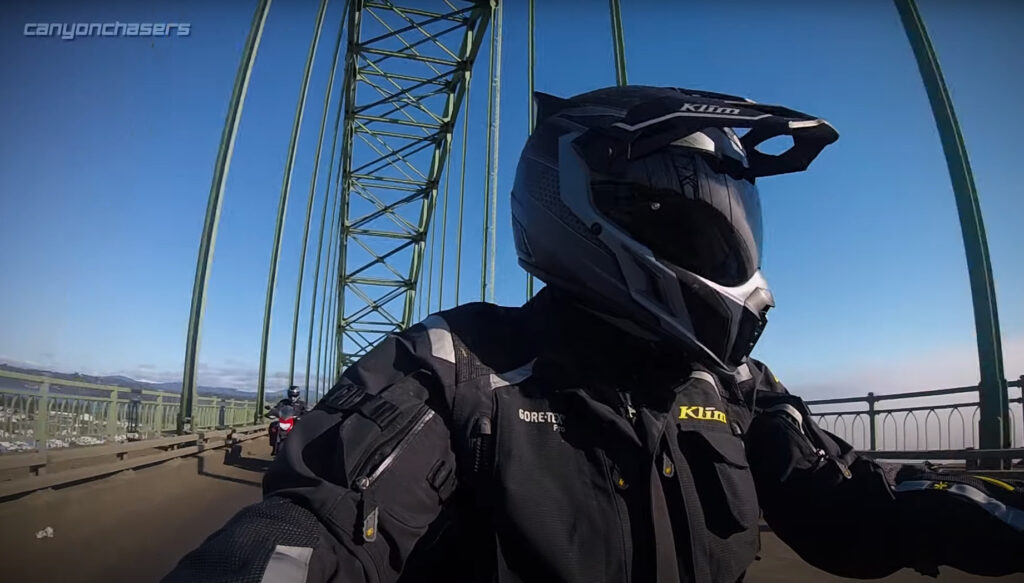
Just like we had to learn patience to release the clutch slowly to get the motorcycle moving. We need to do the exact same thing with our front brake lever. The absolute, without-a-doubt, no-question, most important part of our brake lever is the first five percent of how we squeeze it and the last five percent of how it’s released. The middle part – the power part, the large flexor muscles – thats pretty easy all things considered.
What we’re talking about today is specifically that first five percent. This should set the tone for all of our interactions with the motorcycle; let the weight move forward to the front tire and expand the contact patch, which allows for more braking but It also feels nice and controlled.
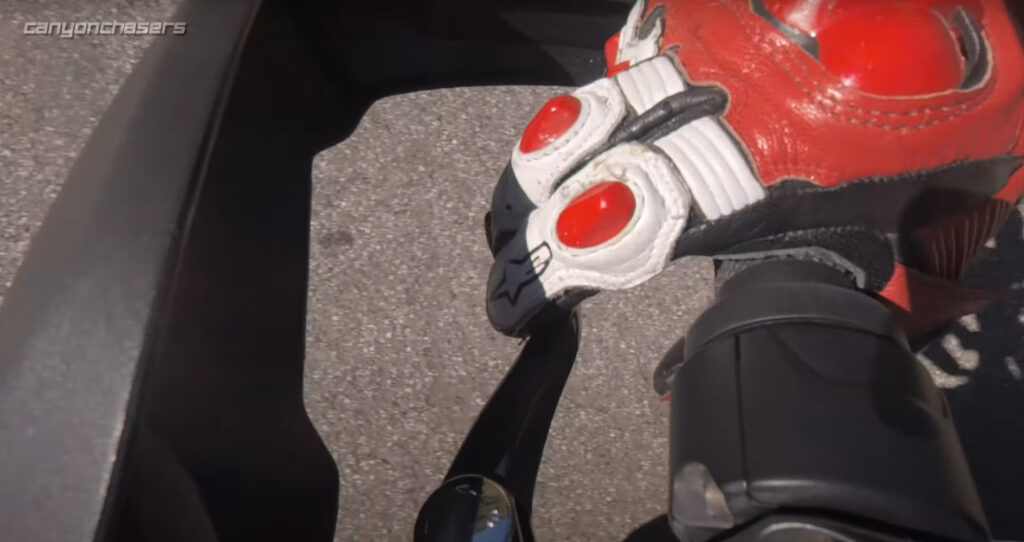
Everything we’re doing on the motorcycle is to communicate what we want to do and how we want it done. Which of these two scenarios would you react better to? Option one: someone comes into your office, tells you very calmly that there may be a problem and asks you to head outside until they can sort it out. Option two: someone kicks your door down, screaming the building is on fire and we have to get out now or we’re all going to die! Same message, two vastly different outcomes based on initial inputs.
Remember guys, as my coach at the Yamaha Champions Riding School so elegantly said; we are not to be afraid of our controls – we are not to be afraid of our front brake – we need to be afraid of abruptness. Abruptness is what gets us.
Now it’s your turn. This has to be practiced. So, just sitting on your bike in the garage or on your next ride, get those fingers over the front brake. Put the pads of your fingers right here on the lever. If the lever isn’t in the correct place, you should be able to adjust it, either by turning this knob like this, or this knob like this. If your brake lever doesn’t have adjustments, there are lots of aftermarket levers that are adjustable.
Put the brake lever where your fingers comfortably rest in roughly this position. Head on over to an empty road or an empty parking lot and practice, as we roll off the throttle, we begin gently squeezing. Focus a lot on that first five percent of braking and that last five percent as the brake is released. Create pretend emergencies in your head where you have to start braking RIGHT NOW, but focus on that first five percent or precision before moving into the power squeeze.
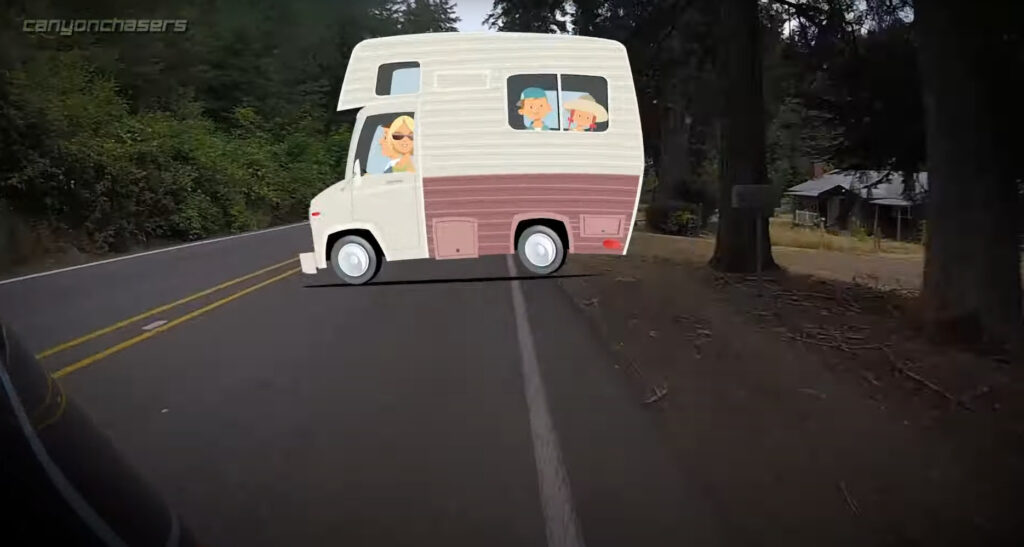
Listen. Guys, we have to stop dying in intersections. We have to be ever vigilant and always be prepared to go to the brakes, RIGHT NOW! We can’t afford to wait those two seconds to get our fingers off the throttle tube, and out and over the brake lever, and then begin squeezing. We need to be ready to squeeze RIGHT NOW!
So, Do you already cover the front brake? What were some the techniques or things you used to help you get proficient at it? Or, are you struggling with this technique? Let me know in the comments. Lets see what we can do to help you become a master of covering the brakes.
